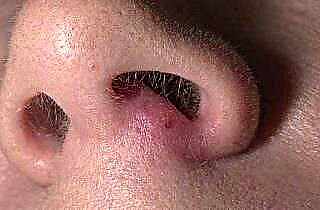When diagnosing hearing impairment, subjective and objective methods of acoustic examination are used. Audiometry allows you to determine the sensitivity of the auditory analyzer to sound vibrations of different frequencies. During testing, the specialist evaluates the degree of hearing loss and the type of hearing loss.
The results of acoustic studies are in the form of graphs - audiograms. The curves on the graph clearly show the minimum intensity of sound signals of a certain frequency, which are captured by the auditory analyzer. Deciphering audiometry allows you to determine in which of the parts of the hearing organ there were violations that provoked the development of hearing loss.
Acoustic Testing Objectives

During the examination of the patient, the specialist must determine the topic, i.e. threshold audibility and the level of damage to the organ of hearing. If the diagnostic method is applied correctly, you can get objective answers to each of the questions. However, the accuracy of the diagnosis is largely determined by the choice of the audiometric method for testing the performance of the auditory analyzer.
Pathological changes can be observed at the level of conduction of sound signals, which indicates the presence of violations in the outer or middle ear. If a problem is detected, conductive or conductive hearing loss is diagnosed. If violations occur at the level of the receptor apparatus, i.e. in the inner ear, the specialist diagnoses "sensorineural hearing loss." Signs of mixed hearing loss are found much less often, in which lesions are observed in both parts of the hearing organ.
It is extremely rare, during the diagnosis, the audiologist detects pathological changes at the level of the cerebral cortex or auditory nerves. In this case, retrocochlear hearing loss is diagnosed, which occurs as a result of damage to the cochlear part of the auditory nerve or brain stem. Such pathologies are most often the result of severe craniocerebral trauma, meningitis or encephalitis.
Audiogram designations
 How to decipher an audiogram of hearing? Correct reading of the audiogram gives an idea of the frequencies at which test signals are not perceived by the patient's auditory analyzer. Thus, the degree of hearing loss and the type of hearing loss are determined. The correct diagnosis influences the choice of the method for treating auditory dysfunction, which increases the chances of achieving the desired therapeutic results.
How to decipher an audiogram of hearing? Correct reading of the audiogram gives an idea of the frequencies at which test signals are not perceived by the patient's auditory analyzer. Thus, the degree of hearing loss and the type of hearing loss are determined. The correct diagnosis influences the choice of the method for treating auditory dysfunction, which increases the chances of achieving the desired therapeutic results.
In a two-dimensional graph, the abscissa is the frequency in hertz (Hz), and the ordinate is the intensity of the sound wave in decibels (dB). During the diagnosis of disorders, the specialist records two audiograms: AD - for the right ear, AS - for the left ear. According to international standards, AD curves are shown in red and AS curves in blue.
During the examination, the points of the threshold hearing at a certain frequency are marked on the graph. When plotting curves for the left ear, crosses are used as points, and circles for the right ear. The audiograms show two curves, the solid one shows the level of air, and the dotted one - bone conduction.
The bone conduction line is always located above the air conduction line.
Evaluation of results
Decoding the audiogram of hearing allows you to accurately determine the degree of hearing impairment, as well as the type of pathology that provoked the development of auditory dysfunction. As a rule, ascending curves on the graphs indicate the onset of conductive hearing loss, and descending curves indicate sensorineural hearing loss.
The type of hearing loss is determined by the size of the air-bone gap, which is the gap between the curves of bone and air conduction. How to interpret the results?
- if the points of the curves for all frequencies lie in the range from 0 to 25 dB, this indicates the absence of audiological disorders;
- if the points of the dotted curve lie within the normal range, and the solid one is much lower, conductive hearing loss is diagnosed;
- if the points of both curves practically coincide, but at the same time are below the normal range, the specialist diagnoses
 sensorineural hearing loss.
sensorineural hearing loss.
In the absence of pathologies, the width of the bone-air gap should not exceed 10-15 dB.
During the determination of the hearing threshold at low frequencies ranging from 125 Hz to 250 Hz, the effect of vibration occurs. For this reason, subjects often mistake vibration for a sound signal. Realizing this, experienced professionals critically evaluate air-bone gap readings at low frequencies.
Degrees of hearing loss
In audiometry, the severity of ear pathology is determined according to the international classification of the degree of hearing loss. Decoding the audiogram allows you to determine the patient's sound perception threshold, which is compared with the data in the table: mild hearing loss (26-40 dB)
- inability to recognize soft sounds and whispering speech; moderate hearing loss (41-55 dB)
- difficult perception of sounds of medium volume; severe hearing loss (56-70 dB)
- inability to perceive most sounds; deafness (70-90 dB)
- perception of only very loud sounds and speech, provided that a hearing aid is used.
If the patient is unable to perceive sound signals with an intensity lower than 90 dB, the audiologist diagnoses deafness. If sensorineural hearing loss develops, the problem cannot be eliminated even with hearing aids and the use of the most powerful sound amplifiers.
Further actions
Decoding the audiogram is a conditional vector that sets the direction of the patient's treatment principle. If auditory dysfunction is detected, additional audiological examination methods may be required, during which an accurate diagnosis will be made. For this purpose, apply:
- auditory evoked potentials;
- acoustic impedance measurement;
- speech audiometry;
- otoacoustic emission.
With the development of sensorineural hearing loss, additional examination may be required from doctors of related specialties: otoneurologists, otosurgeons, oncologists, etc.
The most promising is the medical and physiotherapeutic treatment of conductive hearing loss. When a pathology is detected, the hearing threshold of patients  extremely rarely rises above 55 dB (2nd degree of hearing loss). An exception applies to cases of development of auditory dysfunction against the background of chronic inflammation of the mucous membrane of the tympanic cavity.
extremely rarely rises above 55 dB (2nd degree of hearing loss). An exception applies to cases of development of auditory dysfunction against the background of chronic inflammation of the mucous membrane of the tympanic cavity.
Hearing restoration with the development of sensorineural hearing loss is possible only with the diagnosis and timely treatment of an acute form of pathology. To improve hearing, specialists use cochlear implantation or hearing aids. To prevent the progression of hearing loss, patients with auditory dysfunction should be examined by an audiologist at least 2 times a year.

 sensorineural hearing loss.
sensorineural hearing loss.

